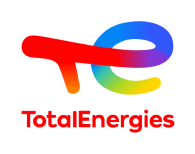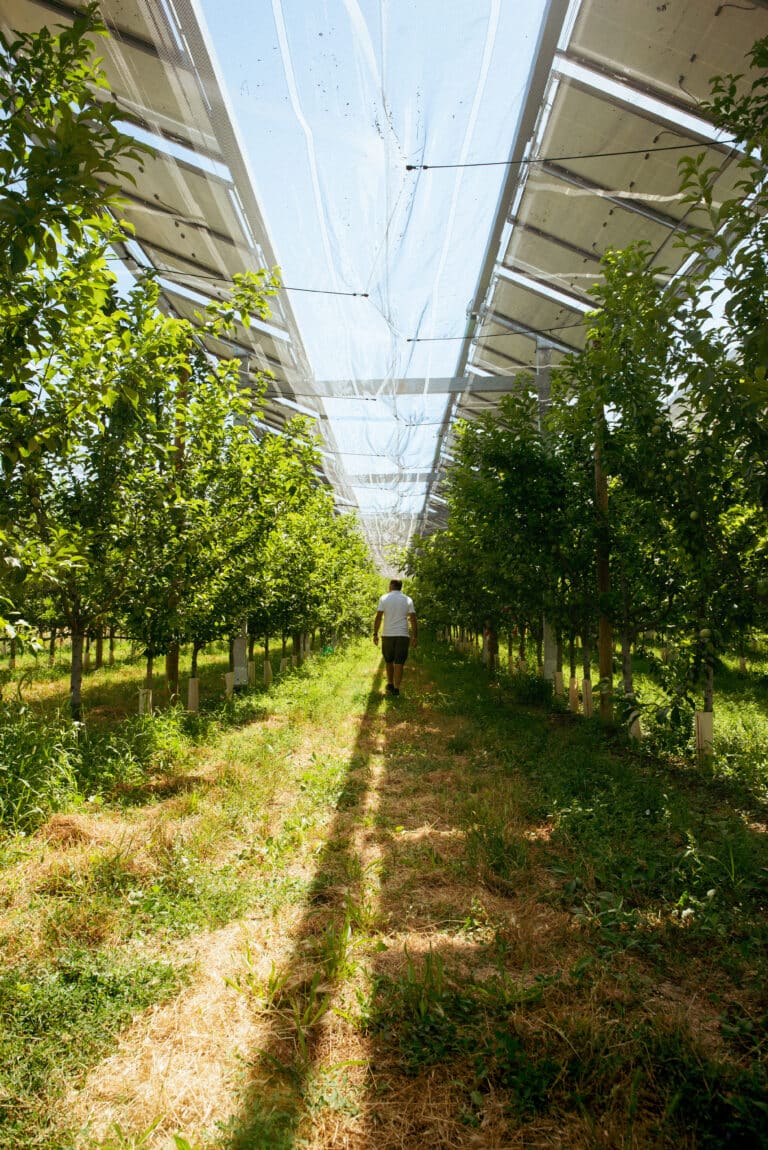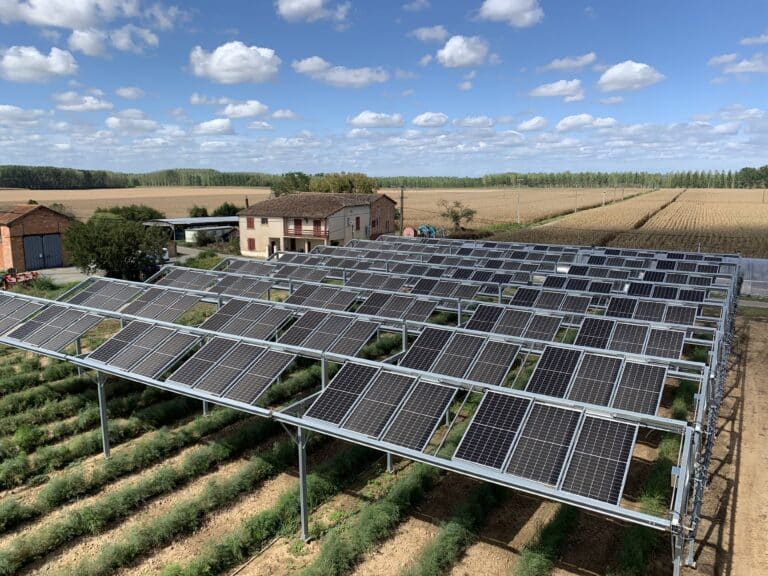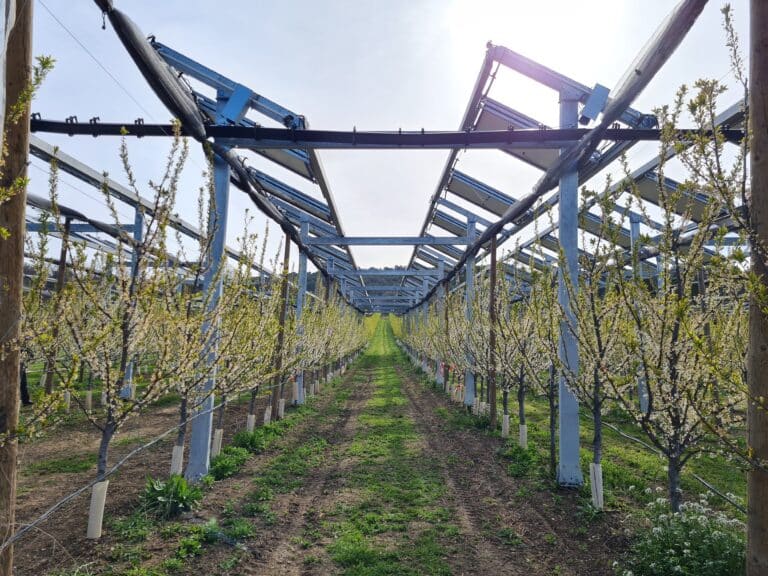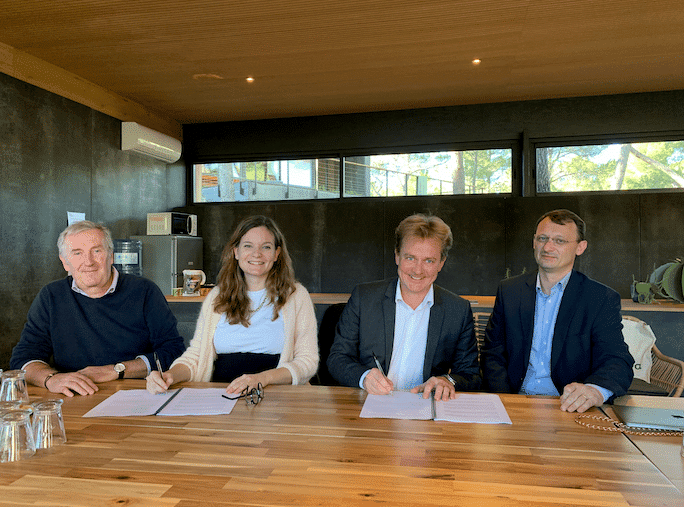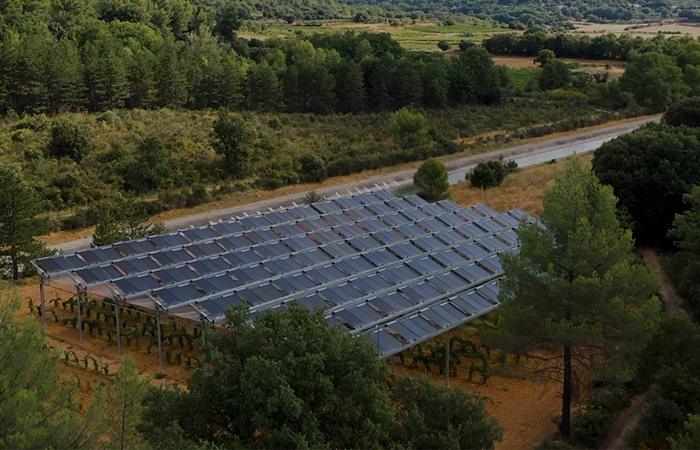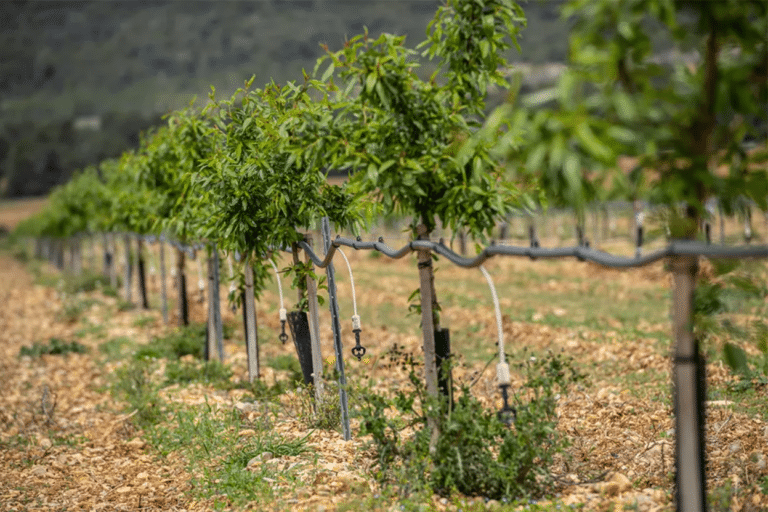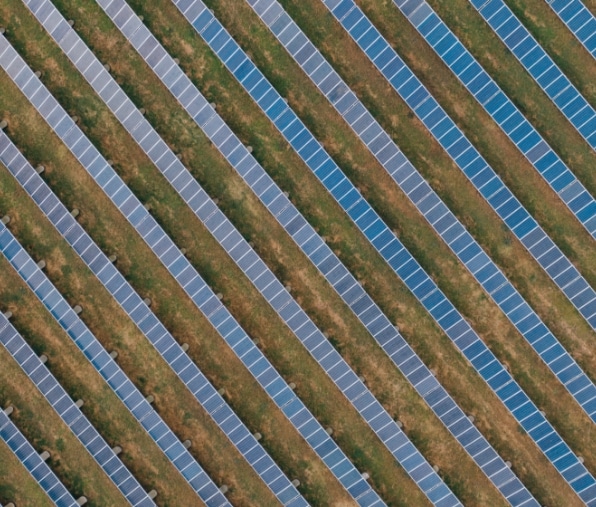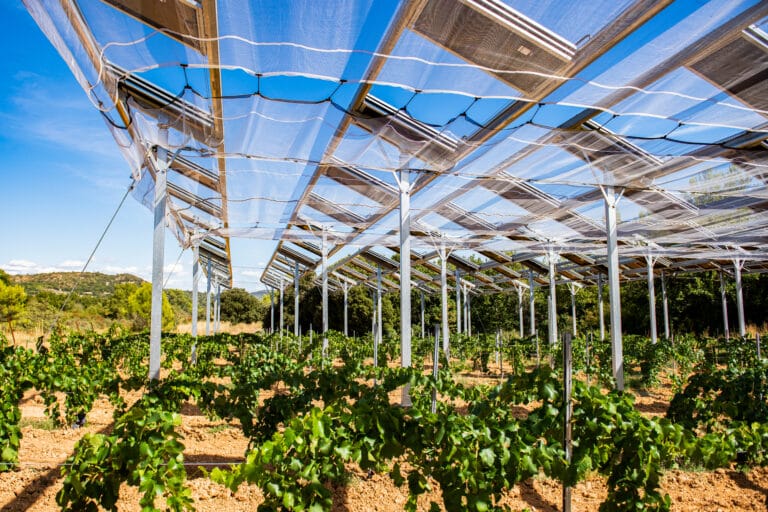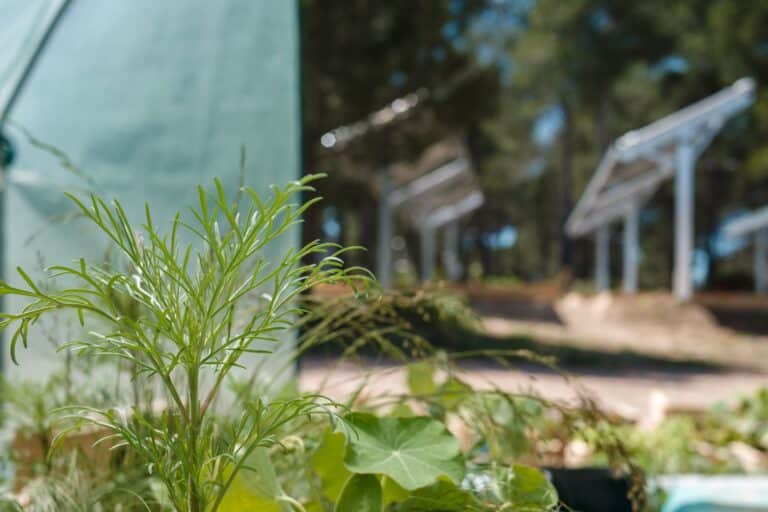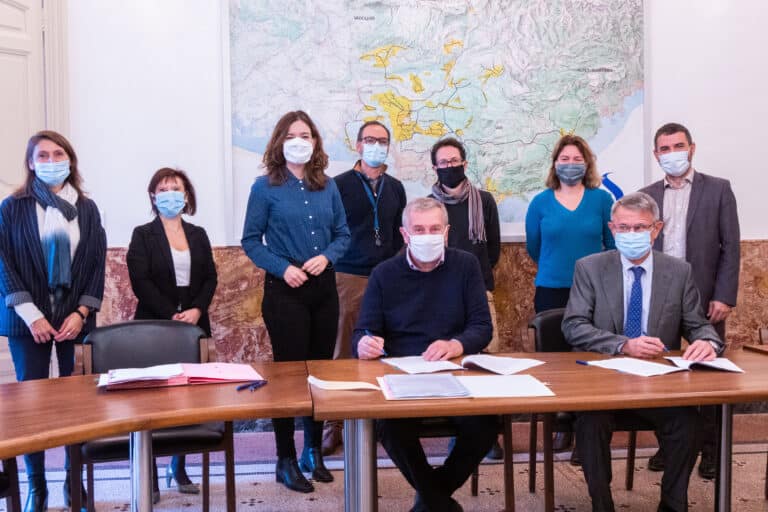L'agrivoltaics is currently in the spotlight following the publication of the latest decree implementing the law to accelerate the production of renewable energies ( APER). A little-known subject until recently, we have created this glossary to help you better understand the vocabulary involved. !
General terms related to agrivoltaics
Renewable energies Renewable energies are energy sources whose natural renewal is fast enough to be considered inexhaustible on a human timescale. Renewable energies include solar, geothermal, wind, hydro and biomass.
Agri-energies All the energies that can be found on an agricultural plot. Some examples of agri-energies:
- Methanization Ecological process for recycling organic matter to produce biogas and digestate (fertilizer).
- Photovoltaic Technology for converting solar energy into electrical energy. Photovoltaic systems can be found on agricultural buildings such as sheds.
- Agrivoltaics : Practice combining on the same surface, agricultural production and electricity generation.
Solar panels (or photovoltaic modules) A device that converts solar energy into electrical energy.
Demonstrator At Ombrea, we have 13 pilot agrivoltaic sites throughout France. The aim of these demonstrators is to enable us to analyze the impact of our solutions on crops and animals, before deploying them on a larger scale.
Synergy Coordinated action of several elements that reinforce each other to achieve the same goal. In the case of agrivoltaics, we aim to achieve the optimum synergy between crop and animal protection and solar energy production.
Agronomy : The study of the relationships between cultivated plants, soil, climate and cultivation techniques, the principles of which govern the practice of agriculture.
Biodiversity The diversity of plant and animal species. The preservation of biodiversity is an integral part of every project we undertake.
Ecosystem A dynamic complex made up of communities of plants, animals, micro-organisms and their environment, which interact to form a functional ecological unit.
Microclimate All atmospheric phenomena specific to a very small geographical area. Agrivoltaic systems can help modulate the microclimate of crops. We study the impact of our solutions using sensors sensors on each site.
Bioindicators Living organisms, present in all terrestrial ecosystems, used to analyze natural ecosystem health and biogeographic changes in the environment.
Reversibility Action of returning to the initial state without leaving any trace. The reversibility of an agrivoltaic installation is an essential component in the construction of a project, the aim being to ensure that its dismantling has no negative impact on agricultural activity.
Agrivoltaic technologies
Here we list the different types of agrivoltaic technology currently offered by Ombrea.
We distinguish two distinct categories of agri-voltaic technology: fixed technologies (where the panels remain immobile), and dynamic technologies (where the panels are controlled, and can therefore move to modify the shade cast on the ground and on crops). Each technology provides an agricultural service tailored to the needs of the farmer and his plot of land.
Here are the 2 fixed technologies we currently offer at Ombrea:
- Structures with vertical bifacial panels In this hedge-like system, the rows generally follow a North/South axis. The bifacial panels are installed vertically to capture light from the east in the morning and from the west in the afternoon. The system is generally positioned on grassy strips parallel to the crops, so as to maintain free passage for farm machinery.

- Structures fixes surélevées : ce système est une adaptation des structures fixes inclinées conventionnelles des parcs au sol à l’agrivoltaïsme : la structure est réhaussée pour s’adapter à la hauteur de culture ou à la taille des animaux, les panneaux sont fixes et légèrement inclinés. Leur orientation, restant globalement Sud, est adaptée à la nature de l’activité agricole (passage sur orientation Sud-Ouest ou Sud-Est). Particulièrement adaptées à l’élevage, les structures mono–pieux sont privilégiées pour permettre un meilleur passage des animaux et du machinisme agricole. Le système préserve l’humidité des sols et apporte l’ombrage nécessaire aux troupeaux notamment lors de vagues de chaleur en été.

Here are the 2 dynamic technologies we currently offer at Ombrea:
- Controlled rotational shading A system of panels installed on a rotating axis above the crops, controlled by an algorithm that integrates the light requirements of the crops and microclimate data from sensors located on the plot. This technology, which can reach heights of between 4 and 5 metres, is particularly well suited to vines and fruit trees.

- Structures trackers : system of of rows of structures structures with rotating axles to which the panels are attached. Aike rotating shading systems, tracker panels are controlled by an algorithm that enables them to meet the needs of crops while creating solar energy. The rows are positionedeThe rows are positioned on grass strips parallel to the crops to maintain free passage for farm machinery. 1V trackers trackers have an axis of rotation located up to 2 to 2.5 meters from the ground2V trackers can reach up to 3 meters. These trackers are ideal for large-scale farming, to market gardening and à l'livestock farming.
Download the Ombrea brochure
Collectors you can find on an agrivoltaic site
Weather station A set of sensors that record and supply physical measurements and meteorological parameters related to climate variations (air and ground temperature, air and ground humidity, PAR sensors, etc.).
The weather station sensors are :
- Anemometer A device used to measure wind force and speed.
- The air temperature and humidity sensors
- The soil temperature and moisture sensors
- The rain sensors
- The light radiation sensors by measuring PAR (or Photosythetically Active Radiation)
On some sites, these sensors are accompanied by the following:
- The sap flow sensors Sap flow sensor: a sensor for precise real-time measurement of plant transpiration and assessment of its water status.
- The dendrometer A sensor that measures radial growth (trunk width) and identifies periods of stress.
- RGB imaging (Red, Green, Blue): A camera looking into the visible spectrum, which, thanks to algorithms developed in-house, enables key characteristics (stress, growth, etc.) to be observed and assessed in real time.
- NVDI imaging Camera looking into the near infrared to assess stress more accurately.
Natural phenomena monitored on an agricultural plot
Irradiance Quantity of energy a light beam carries per second and per unit area.
Evapotranspiration : The emission of water vapor into the atmosphere from the soil and plant surfaces. It is expressed in millimetres of water evaporated.
Scalding Trauma suffered by a plant exposed to excessive heat.
Water stress Situation where demand for water exceeds the quantity available.
Thermal stress The body's inability to maintain a normal temperature due to external factors.
Senescence Aging of plants after creation and seed dispersal.
Has this article helped you see things more clearly? Keep following us, here or on the networks or via our newsletterso you don't miss out on the latest news, innovations and highlights in agrivoltaics!

